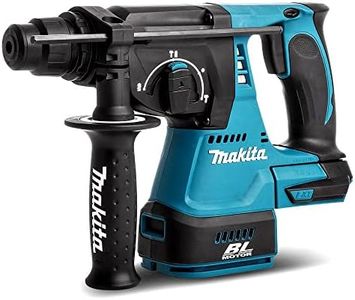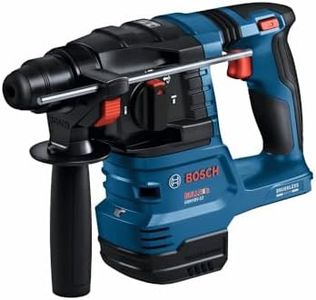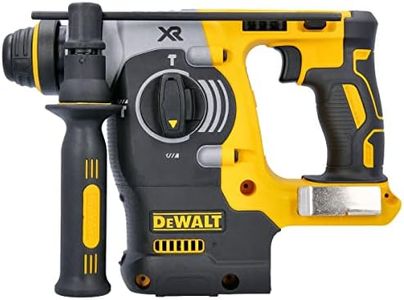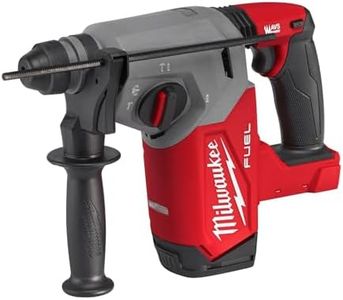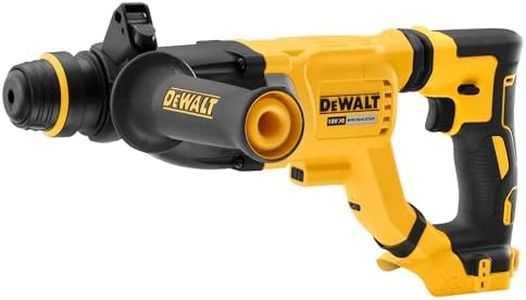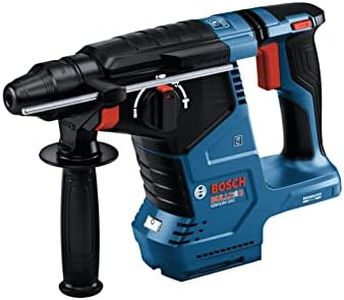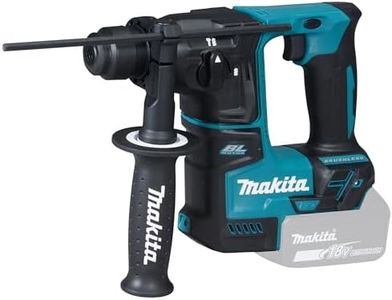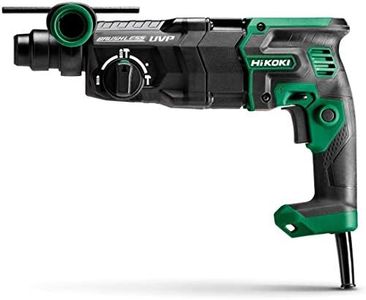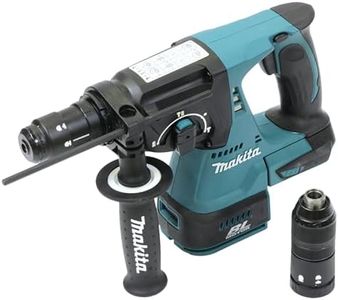We Use CookiesWe use cookies to enhance the security, performance,
functionality and for analytical and promotional activities. By continuing to browse this site you
are agreeing to our privacy policy
10 Best Rotary Hammers
From leading brands and best sellers available on the web.Buying Guide for the Best Rotary Hammers
Choosing the right rotary hammer depends on what kinds of jobs you'll be tackling, like drilling into concrete, masonry, or even chiseling. Rotary hammers are powerful tools made for heavy-duty work, and picking the right one means understanding your needs and matching them to the tool's features. Before you buy, think about how often you'll use it, the types of materials you'll be working with, and whether portability or power matters more for you. Getting familiar with the main specifications will help you make the best choice for your tasks.Power (Amperage or Wattage)Power rating indicates how strong and capable the tool is when it comes to tough drilling or chiseling tasks. Generally, higher power (measured in amps for corded models or volts for cordless ones) means the rotary hammer can handle harder materials and heavier workloads. Light-duty rotary hammers for basic anchor holes or small projects typically have lower power, while medium-duty tools work well for frequent use and moderate drilling. Heavy-duty hammers with high power are suitable for large or professional-scale jobs, like breaking up concrete slabs. Consider your typical project: choose less power for lighter, occasional work, and higher power if you want speed and the ability to tackle very tough materials.
Impact Energy (Joules)Impact energy measures how much force the hammer delivers on each blow, usually in joules. This is crucial for determining both the speed and effectiveness of drilling into hard materials such as concrete or masonry. Lower impact energy is fine for tile work, brick, or lighter chipping tasks. Medium impact energy tools can handle concrete walls, while the highest ratings are best for demolition or large holes in very tough materials. Match the impact energy to your most common job: smaller numbers for precision and control, larger numbers for maximum breaking force.
Drilling CapacityDrilling capacity tells you the maximum diameter the tool can handle in various materials, most often specified for concrete, wood, and steel. This helps you know if the rotary hammer can make the size of holes you need. Models with small capacities are better for light fixings or anchors; medium capacity suits most home improvements or renovation tasks; and large-capacity rotary hammers are aimed at heavy construction work. Think about the size of holes or shapes you need most often and make sure your chosen tool can handle that.
Modes of Operation (Functions)Rotary hammers usually come with different operating modes like drilling only, hammer drilling (rotation plus hammering), and chiseling (hammer only). Some offer two modes (hammer/drill), while others have three (adding pure chiseling). The number of available modes determines how versatile the tool is. If you only ever drill holes, a basic two-mode tool may work. If you want to chisel or break up surfaces, get a model with three modes. Think about your typical tasks and choose accordingly.
Chuck Type (SDS-Plus vs. SDS-Max)The chuck type refers to the way bits are held in the rotary hammer. SDS-Plus chucks are found on lighter and medium-duty models and work with bits up to a certain diameter, making them suitable for most home or small construction jobs. SDS-Max chucks are larger and can handle thicker bits for bigger, tougher jobs. The right choice depends on the typical size of bit you'll need and the intensity of your projects; SDS-Plus if you value lighter weight and flexibility, SDS-Max for power and robustness.
Weight and ErgonomicsThe weight and design of a rotary hammer affect how comfortable it is to use for long periods, as well as how easily you can control it. Lighter hammers are easier to handle overhead or in tight spaces, but heavier models usually offer more power and stability for demolition. Pay attention to grip comfort, vibration control, and balance as well, especially if you plan to use the tool for extended periods. If you do a lot of work overhead or need maneuverability, go lighter; for floor work or extra force, a heavier design may be better.
Corded vs. CordlessRotary hammers come in both corded (plug-in) and cordless (battery-operated) variants. Corded models typically deliver consistent power and are better for heavy, continuous work, but restrict movement to areas near power outlets. Cordless hammers offer much more flexibility and freedom of movement, but battery life can be limiting on large jobs unless you have spares. Think about where you'll be working most: choose cordless for versatility and portability, corded for power and longer sessions.

